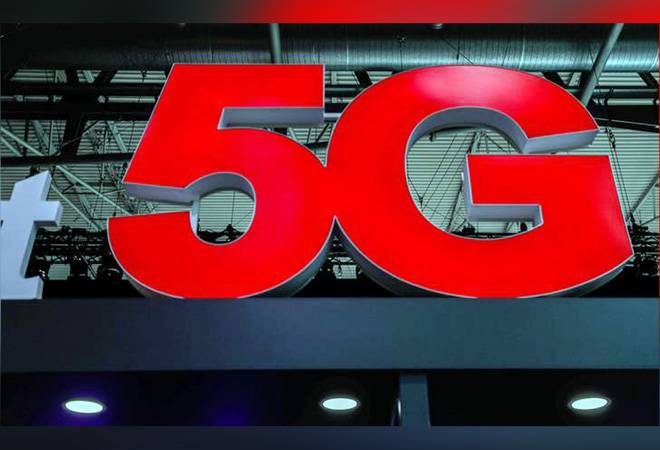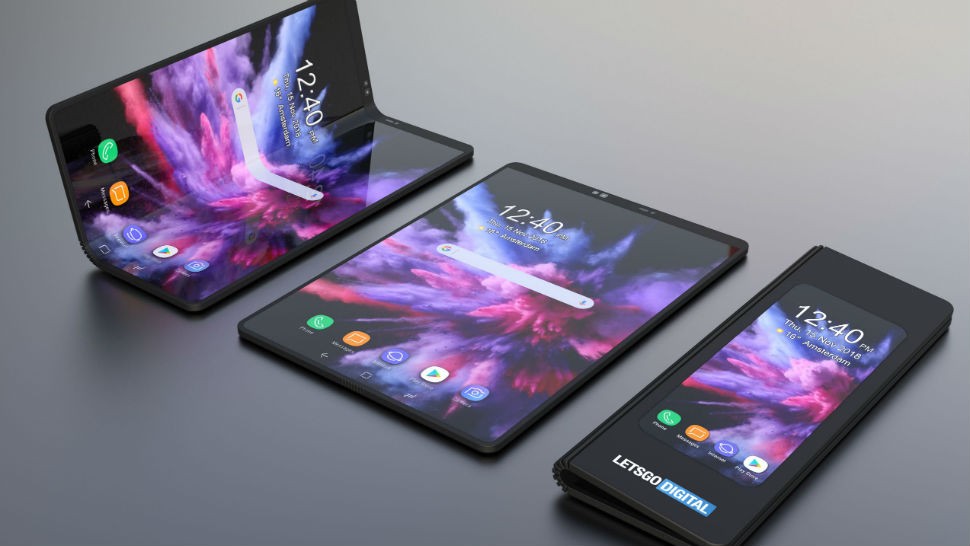CES, held every year in Las Vegas saw some of the most interesting innovations that were showcased by major electronics companies like LG, Samsung and Panasonic among others. In this article, we have compiled a list of top 5 trends you can expect to see at this highly anticipated show, which has become the bedrock of innovation in IoT and AI space.
1| Rise of AI & Robotics
The major trend at CES 2019 this year has been artificial intelligence along with robotics. Not only are the companies embedding AI into their products but also showcasing featured wealth processors and chips that purely focus on AI to enhance the user experience.
- For example, LG TV uses AI to change the picture settings depending on the lighting conditions or the environment the user is in. Cameras using AI to monitor image quality were too showcased.
- Virtual assistants were embedded in cars, soundbars, laptops, TVs that were launched at CES 2019. For example, AI-driven devices like Alexa and Google Home are giving us weather reports, helping us make grocery lists, and streaming our favourite songs, all from the comfort of home.
- Usage of such AI assistants helps us to turn the voice into a normal way to interact with the devices. When it comes to trends in robotics & machine learning, Samsung & lesser known companies like Chronolife steals the show.
Samsung’s Robot Companions– Samsung offered a peek into the future of Connected Living by demonstrating its latest developments in robotics platforms including the Samsung Bot Care, Samsung Bot Air, Samsung Bot Retail, and Samsung GEMS.
- Bot Care: Bot Care is designed to keep you healthy by monitoring vital signs like blood pressure and heart rate, keeping track of medication intake, and providing health advice for users.
- Bot Air is another small robot which is designed to monitor air quality in your home. It can detect pollution sources and even improve air quality
- Another robot, Bot Retail is designed to help users out in retail stores. With built-in shelves and AI-powered software, it can field customer service questions and help out with payment.
Chronolife Vest: Chronolife is a vest to help those who are diagnosed with chronic or congestive heart failure (CHF) to anticipate potential medical emergencies with its Chronolife vest.
- The vest claims to measure six key physiological stats in real time and combined with machine learning also predicts the likelihood of an oncoming heart attack. Its estimated retail price is $230.
- Integrating AI as technology into multiple sectors is pushing the business and consumer tech envelope in 2019.
- AI is driving along with the other emerging technologies, including IoT and 5G is a broader message that CES 2019 reflected.
Join us at #CES2019 for the pre-show keynote address when LG CTO I.P. Park will offer fresh perspectives on the evolving artificial intelligence (AI) landscape, while exploring how AI will impact the lives of consumers in the years ahead. #LGCES2019 https://t.co/39kOons1zI pic.twitter.com/DZNTlo8Jhi
— LG Electronics (@LGUS) January 3, 2019
2| AR & VR Becomes Consumer-Centric
CES has traditionally been the launchpad for new AR and VR tech. There is a special place for AR & VR this year in CES 2019 too. Augmented Reality and Virtual Reality have been around for quite some time.
- But what’s new this time is that it has moved away from a B2B product to a B2C product, and companies are focusing to improve the consumer’s AR experience.
- For example, Lenovo and Vuzix showed their new headsets, while other companies are exhibiting “smart mirrors” for stores in the show till now. What the mirror does here is that it can easily change the colour same garment you are wearing without the need to change the dress.
- Also, products like Vuzix Blade AR Smart Glasses were displayed. The glasses work as a smartphone companion and present overlaid information to users such as a weather report, restaurant menus, and map directions in a mobile, hands-free experience.
- The AR and VR technology has evolved and grown into a multi-million-dollar industry. From Google to Facebook (Oculus), all major technology companies have significantly invested in the AR and VR. The technology itself has become more interactive and dynamic. Gamers are always chomping at the bit to experience the next level of virtual reality gaming. VR is moving far beyond gaming, though.
- It’s also being used in the military, education, in film and entertainment, healthcare and many more fields. Representatives from all these industries showcased their latest and greatest augmented reality (AR)/VR devices at CES this year
3| CES 2019 Electric Bikes, Self-Propelled Vehicles To Flying Cars
This Year CES has shown a whole range of “level” two self-propelled vehicles. This means partial autonomy like adaptive tracking or parking assistance. “Level three”, what CES 2019 is about, is when the vehicle is completely under control, at least temporarily. Self-driving car fleets were launched by GM, Ford and Daimler this year.
 Harley-Davidson Livewire: CES 2019 also got to see the first production electric motorcycle from American staple Harley-Davidson available for 30,000 $.The Livewire has been in development for years but at CES it finally got a price and will be made available this year.
Harley-Davidson Livewire: CES 2019 also got to see the first production electric motorcycle from American staple Harley-Davidson available for 30,000 $.The Livewire has been in development for years but at CES it finally got a price and will be made available this year.
The push for car companies to lead the autonomous vehicle race is in full swing in 2019. Waymo launched the first-ever autonomous commercial ride-sharing service last month, and automakers around the globe are aiming to get their vehicles on the self-driving highway as soon as possible.
 Panasonic Electric Bike: Meanwhile, CES 2019 saw Panasonic reveal the first-ever electric road bike. It one of the highlights of the show which added some drama to the event but made clear that Panasonic like other MNC is much more than an AV company much CES is not just about new consumer products.
Panasonic Electric Bike: Meanwhile, CES 2019 saw Panasonic reveal the first-ever electric road bike. It one of the highlights of the show which added some drama to the event but made clear that Panasonic like other MNC is much more than an AV company much CES is not just about new consumer products.
Billions of dollars have already been poured into research and development at companies like GM, Toyota, Tesla, and more. CES 2019 showcased multiple self-driving vehicles as well as other advancements including Hyundai’s innovative “Elevate,” a four-legged “walking” concept car which can navigate across all kinds of tough terrain.
CES also showcased flying cars this year. NFT Inc. Co-founders Maki and Guy Kaplinsky, a couple who developed a flying vehicle in Israel and California, showcased the flying car. Also, Nissan has unveiled a new invisible-to-visible technology that turns windshields of the car into AR. Toyota’s flying car is also expected at the international tech show yet to be launched.
4| 5G Network Services
 The transition from 4G to 5G is the natural path that is expected to be showcased in CES 2019. The promise of 5G is higher speed, greater capacity, and lower latency, meaning it can act as the central nervous system of this new autonomous age. As the next generation of wireless tech, 5G is designed to make mobile connectivity faster and more reliable.
The transition from 4G to 5G is the natural path that is expected to be showcased in CES 2019. The promise of 5G is higher speed, greater capacity, and lower latency, meaning it can act as the central nervous system of this new autonomous age. As the next generation of wireless tech, 5G is designed to make mobile connectivity faster and more reliable.
- At CES 2019, semiconductor company Qualcomm demonstrated its beamforming technology to increase 5G coverage. There were displays of “Fixed Wireless Broadband” systems which brought this infrastructure to remote areas that can not reach fibre.
- And most importantly, consumer devices like 5G smartphones are emerging. Unlike the previous generation of telecommunications, 5G is not restricted to mobile handsets. Instead, it’s going to power a range of Internet of Things and will see applications in industries such as agriculture, healthcare and others.
- Mobile service leaders like AT&T and Verizon are already teasing 5G rollouts and the evolving technology has been a prime focal point at CES this year. It will also break mobile boundaries to help power self-driving vehicles, smart cities, and the rapidly expanding Internet of Things (IoT)
- 5G technology is still in its niche companies like Intel, Qualcomm, Samsung, and Cisco are also deep in the 5G development fray. A widespread rollout may be a bit down the road, but the buzz around 5G is expected to escalate in the coming months is a key takeaway from this year’s CES 2019.
5| Foldable Phones
Samsung finally unveiled its long-awaited foldable smartphone in November this year. The Korean giant narrowly missed the world’s first tag as a small California-based Royole Corp introduced FlexPai, the world’s first comercial foldable phone.
This year’s international technology trade show saw newer foldable devices which were not restricted to just mobile handsets. Just last year, LG unveiled a 65-inch OLED TV that could be rolled up like a paper.
It looks like smartphones are getting a foldable upgrade. Royole showed off its FlexPai foldable smartphone at CES this year. The sleek, multi-tasking device functions as a mobile phone and a 7.8-inch tablet. But, selected 5G smartphones have been already displayed, so it seems uncertain if any other foldable will be showcased in CES this year.
Outlook –
Although CES,2019 has been the year for AI, Robotics, AR & VR,5G network services, 8K Display etc occupying the major consumer technology space, resilient technologies also grabbed enough space with multiple products being launched with a due focus on it.
Provide your comments below
comments









